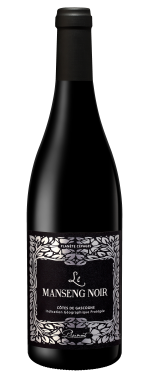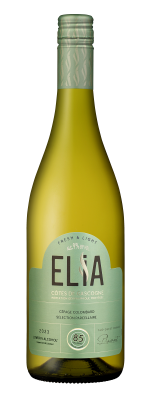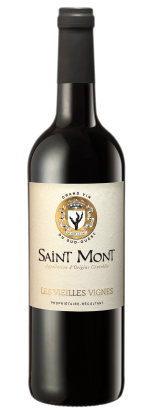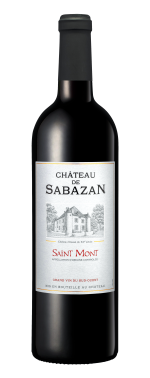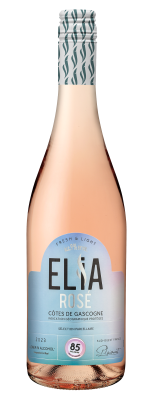Plaimont
South-West France - France
The Winery
In the mid-1970s, winemaker Andre Dubosc set out to revive the "lost" appellations of South West France - lost in terms of quality and also, due to the eclipsing effect of nearby Bordeaux, lost to the commercial ages. For decades, the region had simply been equated with Armagnac and inexpensive, Tannat-based wines, which in turn had quashed the enthusiasm of local producers. With an eye on reviving historic grape varieties along with the region's sense of pride, he helped create the Plaimont Cooperative in 1979, which joined the wineries of Plaisance (PL), Aignan (AI), and Saint Mont (MONT), incorporating virtually all of the region's most important estates and chateaux. Today, Plaimont has an impressive 600 growers and 5300 hectares under vine, and accounts for 98% of the Saint Mont appellation, including the gorgeous monastery of Saint Mont, whose own vineyards can be traced back over 1000 years. In addition, 55% of the Madiran AOC, 65% of the Pacherenc de Vic-Bilh AOC and 30% of the Cotes-de-Gascogne IGP are produced at Plaimont. Now with decades of experience and a palpable wind in their sails, this forward-thinking coop has attracted the attention of critics on both sides of the Atlantic, and the region has been flagged as one of the most exciting new frontiers in French wine.
Like so many European producers, Plaimont is wholly devoted to sustainable farming, and their goal is to have 100% of their farmers under HVE certification by 2025. Adding to its appeal, Plaimont has also been credited with leading the fight against climate change in SW France - in part through the revival of pre-phylloxera grape varieties more resistant to big swings in temperature. Serving as prime example is Manseng Noir, a low alcohol red grape related to Tannat. Nearly extinct in the 1970s, it has now been fully restored to the region, along with a handful of other autochthonous red varieties such as Tardif. The white grape Arrufiac - with its floral nose and supple mouth feel - is another local success story. This rare variety now has 17 hectares under vine, growing alongside Gros Manseng and Petit Courbu, Overall, the estate has been using grapes like these to create wines which display a high degree of freshness despite the ascent of regional temperatures. Lead winemaker, Olivier Bourdet-Pées, has also chosen to downplay the use of new oak: steel is used to age most whites and for reds, barrels from Burgundy and Beaujolais (versus Bordeaux) are often used to keep the focus on the fruit.
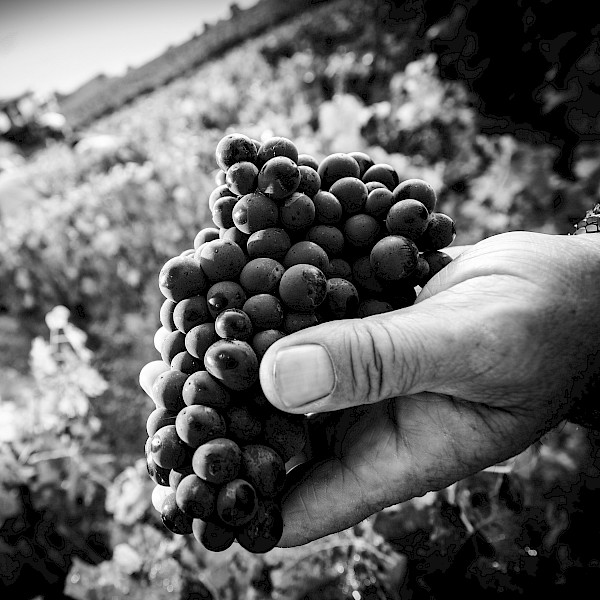
- Enologist
- Olivier Bourdet-Pé
es - Grapes Grown by Winery
- Arrufiac, Cabernet Sauvignon, Gros Maseng, Manseng Noir, Morenoa, Petit Courbu, Pinenc, Tannat, Tardif
- Vineyard Size
- 5,300.0 ha
- Winemaker
- Olivier Bourdet-Pées
- Winemaker Biography
- With the majestic Pyrénées towering in the distance, the Plaimont Cooperative of SW France sits tucked some 50 miles from both snow-capped mountain and Atlantic sea. Over the past few decades, they have single-handedly revived a host of historic grape varieties - from Manseng Noir to Arrufiac - putting their region back on the enological map and making them one of France's most exciting "new" producers.
- Winemaker Generation
- 2nd

Les Cépages Préservés Saint Mont AOC Blanc
From the gorgeous (but lesser known) Saint Mont AOC in Gascogne, this mouth-watering trio of rare grapes grows in a small sub-alpine pocket some 50 miles from the Pyrénées Mountains and just over the border from Basque country. With lush, medium-full body, driven by flavors of ripe apricot, peach, and wild herbs, the palate is simultaneously fresh and zippy, with a long, satisfying finish. 25-year-old vines and 6 months on the lees contribute to the wine's depth of flavor and overall complexity. 95 POINTS from Decanter!
- Color
- Bright golden
- Nose
- Ripe apricot, white peach, lemongrass, lime leaf, and wild herbs
- Palate
- Great viscosity with ripe, white fruit, and simultaneous fresh, tangy acidity
- Finish
- Long and perfectly balanced
- Vineyard Location
- Saint Mont AOC, South-West France
- Vineyard Size
- 100 ha
- Varietals List
-
60% Gros Manseng
30% Petit Courbu
10% Arrufiac - Farming Practices
- Organic (non-certified); grapes dry-farmed and picked by hand
- Elevation
- 250 m
- Soils
- Variegated clay, clay-limestone, and sand
- Maturation Summary
- In Steel for 6-8 months and Bottled for 12 months
- In Steel
- 6-8 months
- Alcohol
- 13.0 %
- Acidity
- 4,63 g/liter
- Residual Sugar
- 2 g/liter
- Annual Production
- 84,000 bottles
Le Manseng Noir Cotes de Gascogne IGP
Saved from extinction by the winemakers at Plaimont, this historic red grape is staging a true comeback in its native Gascony! Beyond the complex nose and the wine's unique flavor profile, we love the fact that the vines are still quite young, yet the palate is smooth and integrated... with the grape's naturally soft tannins weaving effortlessly into the dark forest berry and cherry compote flavors. Adding to the wine's appeal, the ABR is delightfully low and its finish lingering and slightly dry. Welcome back to the fold, Manseng Noir!
- Color
- Dark ruby with violet edge
- Nose
- Blackberry, raspberry, black cassis, and cherry compote against a backdrop of violets, dark olive, and tilled earth
- Palate
- Smooth and medium-bodied with firm, integrated tannins
- Finish
- Pleasant, lingering, and slightly dry
- Vineyard Location
- Côtes de Gascogne, South-West France
- Vineyard Size
- 30 ha
- Varietals List
- 100% Manseng Noir
- Farming Practices
- Organic (non-certified); grapes dry-farmed and picked by hand
- Elevation
- 180 m
- Soils
- Calcareous clay and limestone
- Maturation Summary
- In Steel for 7 months and Bottled for 2 months
- In Steel
- 7 months
- Alcohol
- 11.9 %
- Acidity
- 3.80 g/liter
- Residual Sugar
- 3 g/liter
- Annual Production
- 25,000 bottles
Elia Colombard Cotes de Gascogne IGP
Naturally low in alcohol, this zippy, crowd-pleasing white is crafted from one of SW France's lesser-known varieties: Colombard. While more often seen in blends, this grape is the likely offspring of Chenin Blanc and delivers plenty of aromatic stone fruit and crisp green apple all on its own. Adding to the fresh style are cooler expositions, an early harvest, and constant breezes from the nearby Pyrenees and Atlantic. With an ABV of just 9%, Elia is the perfect companion to a light-hearted luncheon or picnic at the beach!
- Color
- Light straw
- Nose
- Stone fruit, lemon pith, and nettles
- Palate
- Tangy and slightly sweet - with ripe peach, tangerine and green apple
- Finish
- Clean and bright
- Vineyard Location
- Côtes de Gascogne, South-West France
- Vineyard Size
- 450 ha
- Varietals List
- 100% Colombard
- Farming Practices
- Organic (non-certified); grapes dry-farmed and picked by hand
- Elevation
- 200 m
- Soils
- Calcareous clay and limestone
- Maturation Summary
- In Steel for 6 months and Bottled for 1 month
- In Steel
- 6 months
- Alcohol
- 9.0 %
- Acidity
- 4 g/liter
- Residual Sugar
- 14 g/liter
- Annual Production
- 120 bottles
Les Vieilles Vignes Tannat Saint Mont AOC
Produced from 30-year-old vines, this little powerhouse from SW France both over delivers and demonstrates the versatility of that region's tannic mainstay: Tannat. Balanced by the spicy Pinenc (aka Fer Servadou of Basque origins) and Cabernet Sauvignon, we get rich forest fruits on the nose along with earth and leather, followed by a well-structured palate full of firm yet integrated tannins. These continue to linger during the long, complex finish. 91 points WE for both the 2018 and 2019 vintages.
- Color
- Dark ruby
- Nose
- Black forest fruits with hints of bitter chocoalte, tilled earth, and leather
- Palate
- Medium-full body with dark fruit and firm yet integrated tannins
- Finish
- Lingering, dry, and complex
- Vineyard Location
- Saint Mont AOC, South-West France
- Varietals List
-
60% Tannat
30% Pinenc
10% Cabernet Sauvignon - Farming Practices
- Organic (non-certified); grapes dry-farmed and picked by hand
- Elevation
- 250 m
- Soils
- Mix of clay-linestone, variegated clay, and sand
- Maturation Summary
- In 1st, 2nd, and 3rd passage 225L French barrels for 11 months, in Steel 4 months and bottled 12 months
- In Steel
- 4 months
- Alcohol
- 14.5 %
- Acidity
- 3.4 g/liter
- Residual Sugar
- 2 g/liter
- Annual Production
- 80,000 bottles
Chateau de Crouseilles Madiran AOC
With its huge tannins tempered both by ripe forest fruits and deftly managed time in barrel, this bold offering from SW France should both intrigue and satisfy fans of Bordeaux - while remaining utterly distinct and unique. (Testifying to the grape's raw power, Tannat in this area is actually "tamed" by the addition of Cabernet Sauvignon!) Grown on slopes surrounding the hilltop chateau, these old vines enjoy calcareous clay soils and a bit of extra altitude, all less than an hour away from the Pyrenees towering in the distance. 96 points from Decanter for the 2020 vintage.
- Color
- Dark ruby
- Nose
- Dark plum and forest berry with hints of vanilla and spice
- Palate
- Bold tannic architecture encased by ripe fruit
- Finish
- Long and generous
- Vineyard Location
- Madiran AOC, South-West France
- Vineyard Size
- 16 ha
- Varietals List
-
70% Tannat
20% Cabernet Franc
10 % Cabernet Sauvignon - Farming Practices
- Organic (non-certified); grapes dry-farmed and picked by hand
- Elevation
- 250 m
- Soils
- Calcareous clay and gravel
- Maturation Summary
- In French barrels for 12-18 months and bottled for 12 months
- Alcohol
- 14.5 %
- Acidity
- 3.80 g/liter
- Residual Sugar
- 0.5 g/liter
- Annual Production
- 30,000 bottles
Brumes de Gascogne IGP
Hailing from Gascony's windswept hills of Mediterranean cypress and maritime pine, this fresh and fruity rosé also offers a bit of extra structure thanks to the main grape variety, Tannat. After a complex nose of wild berry, fresh hay and dusty riverbed, the palate is crisp but presents a nice weight with some lingering, slightly dry tannins coming into play on the finish. The perfect culinary pairing for rich foods like creamy brie and foie gras!
- Color
- Light peach with silver highlights
- Nose
- Green strawberry, wild raspberry, fresh hay, and dusty riverbed
- Palate
- Nice weight - simultaneously crisp with bright lemon and green apple skin
- Finish
- Lingering, pleasant, and ready for food
- Vineyard Location
- Côtes de Gascogne, South-West France
- Vineyard Size
- 35 ha
- Varietals List
-
55% Tannat
45% Cabernet Sauvignon - Farming Practices
- Organic (non-certified); grapes dry-farmed and picked by hand
- Elevation
- 180 m
- Soils
- Tawny sand and clay-limestone
- Maturation Summary
- In Steel for 3 months
- In Steel
- 3 months
- Alcohol
- 13.0 %
- Acidity
- 3.6 g/liter
- Residual Sugar
- 2 g/liter
- Annual Production
- 180,000 bottles
La Saint Sylvestre Pacherenc du Vic-Bilh AOC
Produced from grapes growing on just a single hectare of land, this decadent, rare bird of a dessert wine has been described by its producers as "Tout un poème!" (Loosely translated, a "poem from end to end") Grown on steep slopes that are spared the hottest hours of afternoon sun, the white Manseng grapes are harvested on the very last night of the year by torch light... so production is literally a festival unto itself. With just 200 cases made, it's born for the sweetest and loftiest of celebrations!
- Color
- Golden straw
- Nose
- Luscious array of sweet spices and dried, candied orange
- Palate
- Rich and full, with co-existing sweetness, spice, and acidity
- Finish
- Sweet yet bright
- Vineyard Location
- South-West France
- Vineyard Size
- 1 ha
- Varietals List
-
80% Petit Manseng
20% Gros Manseng - Farming Practices
- Organic (non-certified); grapes dry-farmed and picked by hand
- Elevation
- 250 m
- Soils
- Clay, limestone, and pebbles
- Maturation Summary
- Bottled for months
- Alcohol
- 12.0 %
- Acidity
- 5.3 g/liter
- Residual Sugar
- 123 g/liter
- Annual Production
- 2,500 bottles
Chateau Sabazan Saint Mont AOP
From a restored country castle and vineyards dating back to the 13th century comes this bold, yet restrained take on Tannat from windswept SW France. Here, the big, wild-hearted tannins of this indigenous variety are tamed by 40-year-old vines - and also by the addition of Cabernet Sauvignon and Pinenc (aka Fer Servadou). Earthy, smoky undertones and dark fruit run throughout, culminating is a smooth, well-rounded finish. 93 Points WE.
- Color
- Deep, dark ruby
- Nose
- Dark cherry, blackberry, hearth smoke and earth
- Palate
- Bold tannic structure accompanied by bright brambly fruits and fall forest floor
- Finish
- Polished and lingering
- Vineyard Location
- Saint Mont AOC, South-West France
- Vineyard Size
- 17 ha
- Varietals List
-
70% Tannat
15% Pinenc
15% Cabernet Sauvignon - Farming Practices
- Organic (non-certified); grapes dry-farmed and picked by hand
- Elevation
- 250 m
- Soils
- Tawny sand and calcareous clay
- Maturation Summary
- In 225L French barrels for 12 months, in Steel 4 months and bottled 12 months
- In Steel
- 4 months
- Alcohol
- 14.5 %
Elia Rose Cotes de Gascogne IGP
Lush yet refreshing, this zippy, crowd-pleasing, low alcohol rosé is crafted from Cabernet Sauvignon grown in SW France, just south of the of Bordeaux region. An early harvest - along with cooling breezes from both the Pyrenees and Atlantic - add to the overall fresh style. With an ABV of just 9%, Elia Rosé is the perfect addition to any light-hearted gathering or community BBQ!
- Color
- Light pink with peach undertones
- Nose
- Lemon zest, raspberry, and wild currant
- Palate
- Clean and bright, with citrus, strawberry, and ripe forest berry
- Finish
- Round and pleasant
- Vineyard Location
- Côtes de Gascogne, South-West France
- Vineyard Size
- 10 ha
- Varietals List
- 100% Cabernet Sauvignon
- Farming Practices
- Organic (non-certified); grapes dry-farmed and picked by hand
- Elevation
- 180 m
- Soils
- Tawny sand and clay-limestone
- Maturation Summary
- In Steel for 3 months
- In Steel
- 3 months
- Alcohol
- 9.0 %
- Acidity
- 3.6 g/liter
- Residual Sugar
- 14 g/liter
- Annual Production
- 75,000 bottles
Vignes Prephylloxeriques Saint Mont AOC
A true enological marvel, this incredibly rare wine from the Pyrenees sub-region in SW France was produced from a tiny plot of vines planted in 1871... which thanks to sandy soils resisted the onslaught of phylloxera. True to Tannat, the structure is bold, yet the tannins and fruit are sophisticated, layered into a lush, dark, and complex tapestry. 95 points WE for the coveted 2019 vintage.
- Color
- Dark ruby
- Nose
- An array of forest berry, with subtle layers of oak and wildflower
- Palate
- Opulent, with rich tannins enveloped by black forest fruit and fresh fig
- Finish
- Complex and lingering
- Vineyard Location
- Saint Mont AOC, South-West France
- Vineyard Size
- 0.5 ha
- Varietals List
-
95% Tannat
5% Pinenc - Farming Practices
- Organic (non-certified); grapes dry-farmed and picked by hand
- Elevation
- 210 m
- Soils
- Tawny sand, clay-limestone mix, and variegated clay
- Maturation Summary
- In French barrels for 12 months and bottled for 12 months
- Alcohol
- 14.0 %
- Acidity
- 3.2 g/liter
- Residual Sugar
- 0.8 g/liter
- Annual Production
- 1,500 bottles

